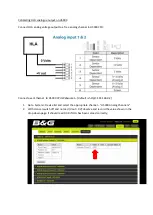
Customer Technical Support:
(877) 801-6901
26
Chapter 2 – Important Safety Information
Rapid changes in altitude or gravity can
affect insulin delivery and cause injury.
DISCONNECT
your infusion set from
your body before flying in an aircraft
without cabin pressurization or in
planes used for aerobatics or combat
simulation (pressurized or not). Rapid
changes in altitude or gravity can affect
insulin delivery and cause injury.
CONSULT
your healthcare provider
about lifestyle changes such as weight
gain or loss, and starting or stopping
exercise. Your insulin needs may
change in response to lifestyle chang-
es. Your basal rate(s) and other settings
may need adjustment.
CHECK
your blood glucose using a
blood glucose meter following a gradu-
al elevation change of up to 1,000 feet,
such as when snow skiing or driving
on a mountain road. Delivery accuracy
can vary up to 15% until 3 units of total
insulin have been delivered or elevation
has changed by more than 1,000 feet.
Changes in delivery accuracy can affect
insulin delivery and cause injury.
ALWAYS
check with your healthcare
provider for specific guidelines if you
want or need to disconnect from the
pump for any reason. Depending on
the length of time and reason you
are disconnecting, you may need to
replace missed basal and/or bolus
insulin. Check your blood glucose
before disconnecting from the pump
and again when you reconnect, and
treat high blood glucose (BG) levels
as recommended by your healthcare
provider.
ENSURE
that your personal insulin de-
livery settings are programmed into the
pump before you use if you receive a
warranty replacement. Failure to enter
your insulin delivery settings could re-
sult in over delivery or under delivery of
insulin. This can cause very low or very
high blood glucose which could result
in serious injury or death. Consult your
healthcare provider as needed.
Interference with your pump’s electron-
ics by cell phones can occur if worn in
close proximity. It is recommended that
your pump and cell phone be worn at
least 6.4 inches apart.
ALWAYS
dispose of used components
such as cartridges, syringes, needles,
and infusion sets following the instruc-
tions from your healthcare provider.
Wash your hands thoroughly after
handling used Pump components.
Summary of Contents for t:slim X2
Page 2: ......
Page 14: ...Section 1 Before You Begin...
Page 15: ...Chapter 1 Introduction...
Page 19: ...Chapter 2 Important Safety Information...
Page 31: ...Chapter 3 Getting to Know Your t slim X2 Pump...
Page 54: ...Section 2 Key Pump Features...
Page 55: ...Chapter 4 Getting Started...
Page 61: ...Chapter 5 Infusion Site Care and Loading Cartridge...
Page 75: ...Chapter 6 Personal Profiles...
Page 85: ...Chapter 7 Bolus...
Page 93: ...Chapter 8 Stop Resume Insulin...
Page 96: ...Section 3 Additional Pump Operations...
Page 97: ...Chapter 9 Temporary Basal Rate...
Page 101: ...Chapter 10 Quick Bolus...
Page 105: ...Chapter 11 t slim X2 Pump Settings...
Page 109: ...Chapter 12 t slim X2 Pump Info and History...
Page 111: ...Chapter 13 t slim X2 Pump Reminders...
Page 117: ...Chapter 14 User Settable Alerts and Alarms...
Page 120: ...Section 4 t slim X2 Pump Safety Alerts and Alarms...
Page 121: ...Chapter 15 t slim X2 Pump Alerts...
Page 143: ...Chapter 16 t slim X2 Pump Alarms...
Page 157: ...Chapter 17 t slim X2 Pump Malfunction...
Page 160: ...Section 5 Living With and Caring for Your t slim X2 Pump...
Page 161: ...Chapter 18 Lifestyle Issues and Travel...
Page 165: ...Chapter 19 Taking Care of Your t slim X2 Pump...
Page 168: ...Section 6 Technical Specifications and Warranty...
















































